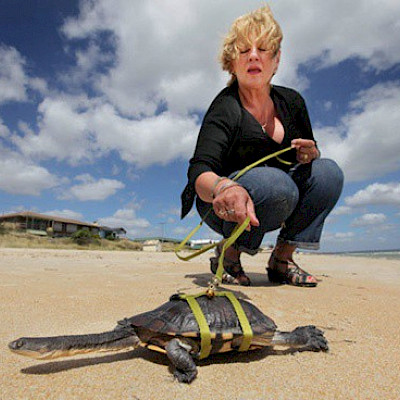The anatomy of men and women is so different that even ancient doctors created a special branch of medicine - gynaecology. The translation of this Greek word literally means "the science of women". But, of course, it refers to a narrower field of knowledge - the study, diagnosis and treatment of diseases that occur only in the female body, primarily in the reproductive system. And today, an annual visit to a gynaecologist has become the norm, an obligatory medical procedure.
However, there is a problem of women's health that is closely related to the genitourinary system, but which is much less talked about. This problem is urinary incontinence in women, especially in adulthood. A large number of patients are too embarrassed to talk about it with their closest friends, partners or even with their own doctor. And so they continue to suffer in silence. Yet this is a condition that modern medicine knows how to treat quickly and effectively. So today I am going to talk about why urinary incontinence occurs in women and, most importantly, how to get rid of it.
A few statistics
Incontinence is an involuntary, uncontrolled leakage of urine from the urethra. According to statistics, women are twice as likely as men to suffer from incontinence. According to the World Health Organisation, the risk of incontinence increases with age. Around 44% of women over the age of 50 have experienced at least one episode of urinary incontinence. But even at a younger age, about 10% of women experience this problem.
Why does it happen?
The main reason is age-related changes. In most cases, these changes, such as weakened muscle tone, affect the bladder's ability to hold fluid. Incontinence can also be caused by any condition that is more likely to occur with age, such as:
- spinal cord disease;
- herniated discs;
- endocrine disorders, especially diabetes mellitus;
- and even diseases of the musculoskeletal system - sometimes the patient simply does not have the time to go to the toilet when he or she feels the urge to urinate.
The second major cause of urinary incontinence is the peculiarities of childbirth. I emphasise that it is not the number of births that is important, but their course and the presence or absence of complications. If a woman's perineal tissues or pelvic muscles have been traumatised during childbirth, urinary incontinence can occur even at the age of 20-30. The risk of incontinence also increases with prolonged or rapid childbirth.
Doctors also identify a number of other causes:
- Extensive gynaecological surgery, which can damage the nerves in the pelvis. This reduces the tone of the urethral sphincter - the muscle that prevents urine from leaking out.
- Any trauma to the perineum not related to childbirth.
- Increased body weight.
- Intestinal dysfunction.
- Psychoneurological diseases.
- Constant high physical activity associated with work or sport.
- Tumours and infectious diseases of the urinary organs.
It is important to note that uncontrollable urge to urinate occurs mainly in stressful situations. In addition, episodes of incontinence are often associated with coughing, laughing or physical exertion. In these cases, the tension of the abdominal muscles increases the pressure on the bladder. This causes some urine to leak involuntarily.
How is female urinary incontinence treated?
Unfortunately, people with urinary incontinence often do not seek medical help because they consider their problem to be an inevitable part of ageing that cannot be changed. Many women are also very embarrassed. Of course, incontinence is not a life-threatening condition, but it does cause a great deal of anxiety, personal hygiene, psychological and social problems. And these problems are an important reason for medical intervention. After all, according to the WHO, health is the complete physical and mental well-being of a person.
The most important thing is to react in time to the onset of incontinence. The first episode of involuntary urine leakage, even in small amounts, should be seen by a doctor immediately. In the early stages, incontinence can often be cured with a short course of medication or physiotherapy. Dr. Arnold Kegel's method, for example, gives good results. In the mid-twentieth century, this American gynaecologist developed a series of exercises to strengthen the muscles of the pelvis and perineum. Electrical stimulation of the pelvic muscles also has a similar strengthening effect.
Female urinary incontinence is also sometimes treated with laser. Laser radiation delivered through a vaginal probe activates the synthesis of collagen protein in the vaginal walls. They become thicker, which improves a woman's control over the passage of urine through the urethra.
But the most effective way to solve this problem is a small surgical procedure. The gold standard in modern medicine is an intervention called sling urethropexy, or TVT-O (tension-free vaginal tape-obturator). It is a minimally invasive surgery with a low risk of complications and a very short recovery time. It is performed under local anaesthetic and takes only 30-40 minutes. Patients should then avoid heavy physical activity and sexual contact for one month, after which they can resume their normal lifestyle without any restrictions. Statistics show that more than 90% of women who have undergone the TVT-O experience complete cessation of involuntary urination.
***
In conclusion, I would like to emphasise once again that urinary incontinence is not only a medical issue, but also a crucial social and psychological problem. Women with this disorder are forced to change their daily routine, limit their fluid intake, use pads all the time, etc. In particularly difficult situations, patients refuse work and long journeys, try not to go far from home and literally chain themselves to the house. At the same time, they are embarrassed to talk to their doctor about the incontinence. This is the totally wrong approach because this condition can be successfully treated. Urinary incontinence is not a final verdict – it is a medical problem that modern medicine knows how to solve quickly and effectively!
Take care and be healthy!
Denis Lokoshko, doctor and freelance correspondent.
















